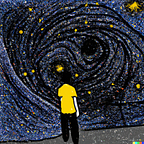Quantum Machine Learning and available Simulators
Data is stored with Boolean bits at the lowest level in classical computing, where each bit can take only one of two possible values (0 or 1) depending on the existence of electron charge: the existence of electron charge indicates 1, otherwise 0. On the other hand, the basic unit in quantum computing is the quantum bit, referred to as Qubit, which can take both the values 0 and 1 simultaneously. Mathematically, a qubit state is a vector in two-dimensional (Hilbert) space, described by the linear combination of the two basis states (|0>, and |1>) in a quantum system:
where α, β ∈ ℂ are probability amplitudes; need to satisfy |α|²+ |β|² = 1.
A qubit state corresponding to such a combination of basis states is also called quantum superposition. Furthermore, two qubits can have certain correlations via a quantum phenomenon known as entanglement, which does not have a classical counterpart. When two qubits are entangled, their quantum state cannot be described independently of the state of others. These main principles of quantum machines (superposition and entanglement), give quantum computers enormous power in handling and manipulating many quantum states simultaneously (quantum parallelism), as well as the potential to solve problems that are considered unsolvable in classical computation- leading toward the notion of quantum…
